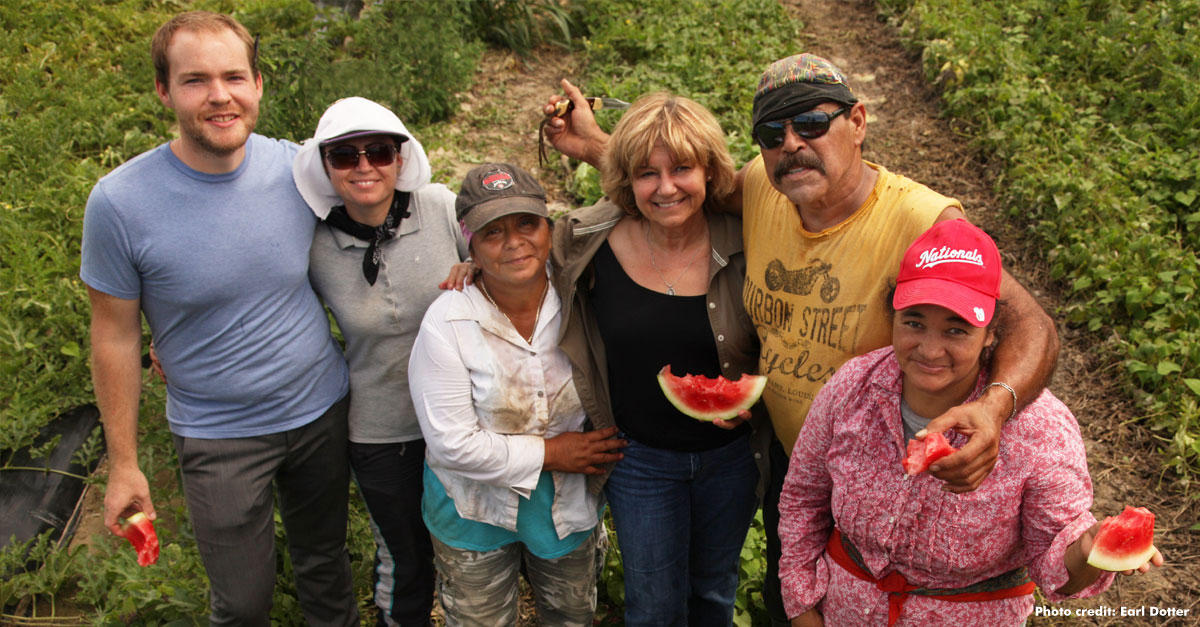- Who We Are
- Clinician Employment
- Publications
- Witness to Witness (W2W)
- Kugel & Zuroweste Health Justice Award
- Your Voice Matters: Photovoice Project
Thu, 06/16/2016 | by Claire Hutkins Seda


A new policy research brief released in May explored how migrant health centers and their patients are faring under the Affordable Care Act (ACA) -- and their conclusions are encouraging, but mixed. The brief, completed by the Geiger Gibson/RCHN Community Health Foundation Research Collaborative, reviewed the most recent data from health centers on their migratory and seasonal agricultural worker (MSAW) patients, to uncover a number of key changes in the last decade, particularly for MSAWs living in Medicaid expansion states. Here are some of the findings of the research brief:
The numbers: Increase in farmworkers, increase in migrant health centers
The report notes that, in 2014, 1,278 federally-funded community health centers in the US served almost 892,000 MSAWs, a growth of 28 percent since 2003. (The figure includes agricultural workers, their families, and workers who are no longer engaged in agricultural work due to age or disability, all of whom are eligible to receive health services funded by Section 330g of the Public Health Service Act.) And 71 percent of those MSAWs was served in just four states: California, Florida, North Carolina, and Washington State. Forty-eight percent of MSAW patients were seen in California health centers alone. Nine out of ten MSAW patients who went to a health center were served at migrant health centers, those that receive funding specifically to serve migrants. And those migrant health centers were found to outperform other health centers on some important quality measures like birth weight and cervical cancer screenings, despite significantly fewer full-time clinicians. The report also noted an increase in the number of migrant health centers as well, from 125 in 2003 to 172 in 2014, and reviewed the differences in patient population between health centers and migrant health centers, including a higher percentage of children at migrant health centers and more patients who are best served in a language other than English.
Many new patients with health insurance coverage
The effects of the ACA on agricultural worker populations are evident in the changes to uninsured rates. In 2000, 85 percent of agricultural workers lacked health insurance. By 2012, two years after the ACA went into effect, the number had dropped to 66 percent. The drop was significantly steeper among children: In 2000, 90 percent of MSAW children patients were uninsured, falling to just 18 percent uninsured by 2012. What’s more, the overall MSAW uninsured rate declined faster than that of overall low-income adults. Yet, the brief found that agricultural workers remain twice as likely to be uninsured than other low-income adults and MSAW children still lacked health insurance at a “substantially higher rate” than non-MSAW low-income children in 2012.
Medicaid expansion is key
The brief found that Medicaid expansion further extended health insurance coverage at migrant health centers. While there were fewer uninsured patients at migrant health centers throughout the country between 2013 and 2014, migrant health centers in Medicaid expansion states saw the sharpest decreases, with a concurrent increase in patients with Medicaid. Migrant health centers in states that chose not to expand Medicaid did not see the increase in Medicaid patients. The brief also discovered that, in their study of 16 migrant health centers serving high percentages of MSAWs, those served by migrant health centers in Medicaid-expansion states are twice as likely to be insured than those in states that opted not to expand Medicaid.
Less migration means greater utilization of services
The brief pins the “noteworthy increase” in utilization of health services partially on the ACA and Medicaid expansion, but also on changing labor patterns of agricultural workers. The most recent National Agricultural Workers Survey (NAWS) data show a drop in the percentage of agricultural workers who migrate, from 42 percent in 2001 to 17 percent in 2012. The significant barriers to attaining care that migration creates are reduced or eliminated, which may partially explain the increase in agricultural worker health service utilization.
Where we’ve been shows us where to go
The authors of the brief are clear in the import of their conclusions: “This analysis shows that the Medicaid expansion matters, not only to low-income populations generally, but also to agricultural worker populations most at risk for low rates of coverage and care.” While the increase in health coverage among agricultural workers is encouraging, the authors note that grant funding still plays a critical role in assuring health access for this underserved population, as MSAWs continue to lack health insurance at higher rates than the overall low-income population. Read the complete report here.
Like what you see? Amplify our collective voice with a contribution.
Got some good news to share? Send it to us via email, on Facebook, or on Twitter.
Return to the main blog page or sign up for blog updates here.







